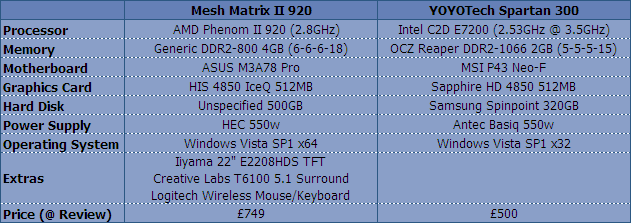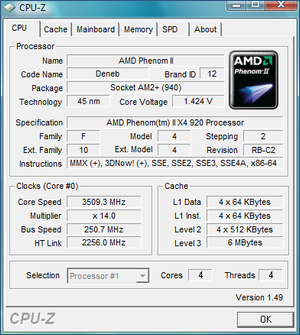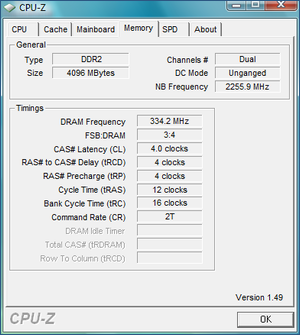MESH Matrix II 920 (Phenom II) PC System
Test Configuration
For the benchmarking stages of today’s review we are going to be placing the Matrix II alongside the recently reviewed YOYOTech Spartan 300. We must stress at this point that this is NOT a head-to-head comparison as the systems are aimed at quite different markets with the Spartan 300 being a base-unit only compared to the all inclusive package of the Matrix II. However, with both systems being based around an HD 4850 graphics card, it will certainly be interesting to see how the rest of the system performs.
As we will be using most of the results from the earlier YOYOTech review the suite of applications and games remains roughly the same. However, for the sake of completeness we will also be including a couple of more up-to-date games to give a better idea of how the Matrix II performs with the very latest releases.
• Sisoft Sandra XII 2008c
• SuperPI Mod 1.4
• PCMark Vantage x64
Disk I/O Performance
• HD Tune Pro 3.10
3D / Rendering Benchmarks
• Cinebench 10
• 3DMark05
• 3DMark06
• 3DMark Vantage
• POV-Ray 3.6
3D Games
• Crysis
• GRID
• Unreal Tournament III
• Call of Duty 4
• Far Cry 2
Stability & Overclocking
MESHÂ state that the Matrix II (and indeed all of their systems) are “turnkey”, in that all you need to do is turn them on and they simply work straight out of the box. This was certainly the case for the sample system that we received, which gave us absolutely no issues at all on first boot. However, the ability to power-on first time is hardly a great test of stability and for this reason we subjected the Matrix II to an entire day’s (12hrs) worth of OCCT and ATITool Artifact Scanning. At the end of the day, the system had pretty much heated the entire office, but impressively it hadn’t faltered once.
Interestingly the Phenom II 920 was actually capable of completing POST at 4.2GHz. But without Vcore options at the very least, there was absolutely no chance of making this stable.
Now let’s move on to some benchmarks and see how the system performs at its stock speed of 2.8GHz.






